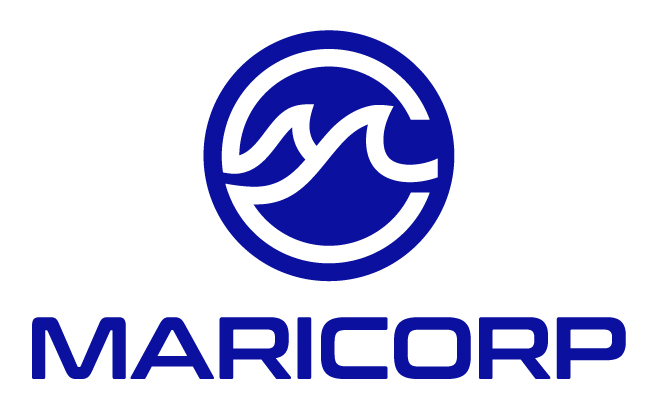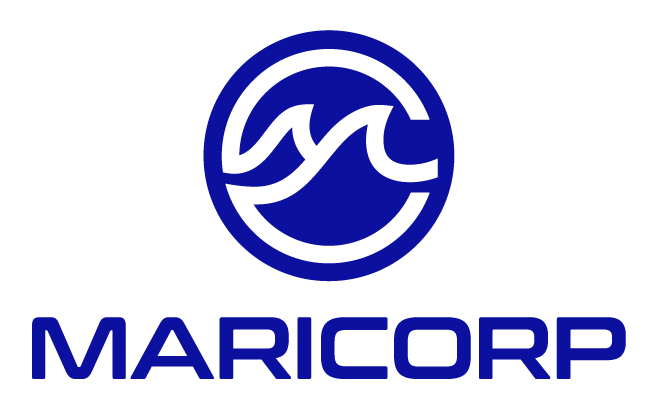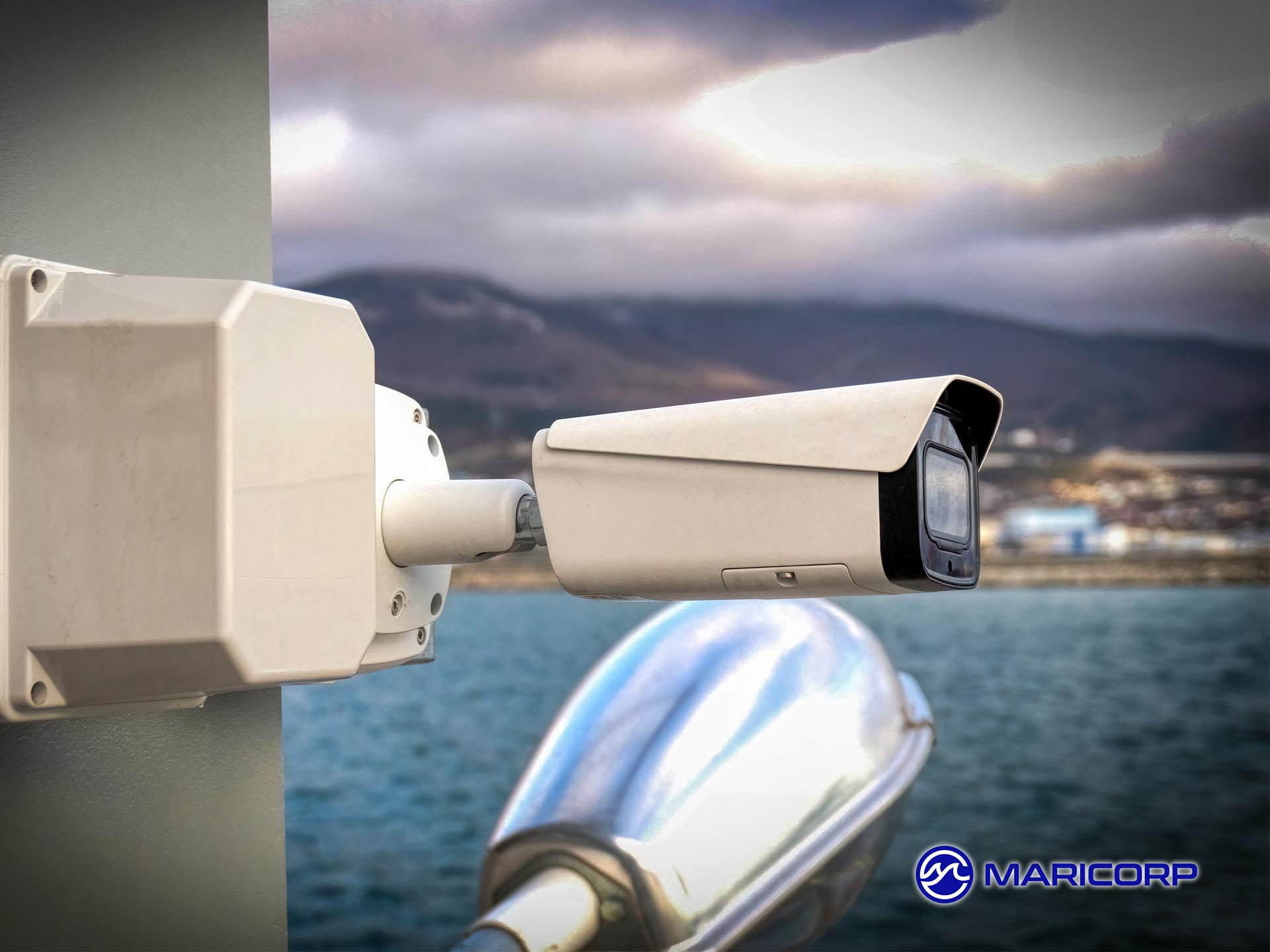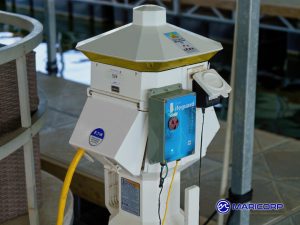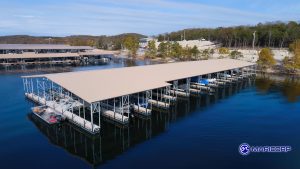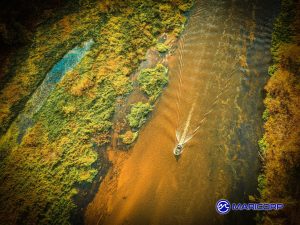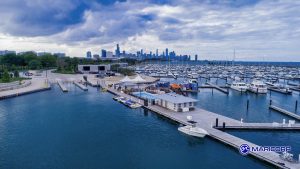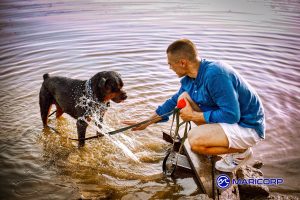Security and Safety Preparation – New Strategies in 2025
Marina Security and Safety Preparation: Off-Season Strategies and Tech Innovations
Creating a safe and secure marina environment involves more than installing a few cameras or posting signage. Security and safety preparations require a comprehensive approach that blends physical deterrents, fire safety measures, boat owner responsibility, and cutting-edge technology solutions. The off-season provides an ideal window for reviewing and upgrading safety protocols—allowing management to test new systems, address vulnerabilities, and train staff without the added pressure of a busy marina.
1. Understand the Importance of Comprehensive Security and Safety Preparation
A marina is more than a place to dock a boat—it’s a community hub, storage facility, and gateway to maritime recreation. Consequently, security and safety preparation must extend beyond preventing unauthorized entry; it should also encompass fire prevention, boat maintenance protocols, and emergency response plans.
- Asset Protection
- Boats represent significant financial investments. A robust security strategy safeguards these assets from theft, vandalism, and accidental damage.
- Additional on-site assets—fuel stations, retail stores, and high-value equipment—also need protection to prevent costly losses and liability claims.
- Reputation Management
- A security breach can damage a marina’s reputation overnight, especially with the instant reach of social media and online reviews.
- Word travels quickly among boat owners, often influencing their decisions on where to rent slips or store vessels.
- Legal and Insurance Considerations
- Marinas that fail to meet safety standards risk legal repercussions and higher insurance premiums.
- Compliance with local regulations, guidelines, and recommendations demonstrate due diligence and fosters trust within the boating community.
By treating security as an ongoing priority, marina operators can bolster customer confidence, minimize risks, and maintain a competitive edge.
2. Assess Past Security and Fire Safety Performance
A proactive approach begins with a close examination of the previous season’s security incidents, fire-related concerns, and compliance with local regulations.
- Review Incident Reports
- Gather data on any theft, vandalism, or unauthorized access that took place in the last year.
- Look at the frequency and severity of each incident, noting any patterns (e.g., repeat occurrences at night, specific dock areas affected).
- Investigate how quickly staff responded and whether any policies fell short in effectively addressing these issues.
- Conduct Fire Safety Audits
- Inspect docks, boathouses, and storage areas to identify potential fire hazards such as faulty wiring or improperly stored fuel.
- Confirm whether fire extinguishers, hoses, and alarms meet local codes NFPA guidelines function properly, ensuring they are fully charged and accessible at multiple locations on your dock.
- Check that marina staff and boat owners alike are familiar with safety protocols, including use of emergency equipment.
- Evaluate the condition and reach of fire hoses; replace any that show visible wear or have lost pressure.
- Keep hydrant connectors in good working order and clearly label their locations.
- Analyze Boater Conduct
- Assess how diligently slip holders complied with existing rules, from properly disposing of flammable materials to keeping walkways clear.
- Consider whether boat owners followed guidelines for safe battery charging, fuel management, and onboard cooking.
- Note any common oversights, as these can be addressed through enhanced communication and revised policies.
With this information, owners and operators can develop targeted plans that address weaknesses in security and fire safety while also emphasizing individual boater responsibility.
3. Conduct a Vulnerability Assessment During the Off-Season
A vulnerability assessment is the first step toward a more secure marina, revealing weak spots in physical infrastructure, security systems, and operational procedures. Doing this in the off-season ensures minimal disruption for current tenants and visiting boaters.
- Physical Infrastructure Inspection
- Examine docks, pilings, walkways, and fences for damage or signs of wear.
- Check locks, gates, and access points for tampering or wear-and-tear; even a single faulty gate can create an entry point for unauthorized visitors.
- Inspect lighting systems to verify they adequately cover all areas, especially high-traffic zones like fuel docks and parking lots.
- Administrative and Procedural Review
- Evaluate staff training programs to ensure employees understand emergency protocols and security best practices.
- Revisit standard operating procedures (SOPs) to see if they address modern threats like cyberattacks on digital lock systems or vulnerabilities in Wi-Fi networks.
- Coordinate with local law enforcement or security consultants who specialize in marina environments for expert advice.
- Data Collection and Analysis
- Review security logs, incident reports, and insurance claims to identify recurring problems (e.g., break-ins, unauthorized boarding).
- Track patterns over time, focusing on whether certain areas see repeated issues.
- Leverage this data to fine-tune the security plan, focusing resources where they are needed most.
Once these vulnerabilities are identified, immediate action can be taken to prioritize upgrades or policy changes before the busy season begins.
4. Strengthen Fire Safety Measures
Fire safety is an integral part of marina security, requiring a specialized set of protocols to handle the unique hazards of a waterfront environment. Fuel storage, electrical hook-ups, and engine repairs all introduce fire risks that must be meticulously managed
- Review Existing Fire Suppression Systems
- Conduct a thorough inspection of fire extinguishers, sprinklers, and standpipes; replace outdated or non-compliant equipment immediately.
- Ensure emergency exits and hydrants are clearly marked with reflective signs that remain visible at night or in bad weather.
- Check that building permits and insurance requirements are up-to-date regarding fire prevention infrastructure.
- Smoke and Heat Sensors
- Incorporate wireless heat sensors in high-risk areas, such as dockside fuel stations and workshops.
- Place smoke detectors in enclosed boathouses or covered slips, particularly near electrical panels or battery charging stations.
- Connect these sensors to a central alarm system that notifies both on-site staff and local fire departments instantly.
- Develop a Comprehensive Fire Response Plan
- Create an evacuation map that includes designated muster points on land and in the water.
- Train staff to handle smaller incidents with portable extinguishers and coordinate larger responses with the local fire department.
- Conduct quarterly or semi-annual drills, inviting participation from boat owners to build awareness.
- Maintain Electrical Systems
- Inspect shore power connections, pedestals, and wiring for fraying, corrosion, or inadequate grounding.
- Schedule preventive maintenance for electric panels, ensuring they meet marine-grade standards.
- Encourage boat owners to have their vessel’s electrical systems inspected yearly by certified marine electricians.
Proactive fire safety measures not only safeguard lives and property but also help reduce liability risks and insurance premiums.
5. Upgrade Camera and Surveillance Systems
Modern technology offers an array of surveillance options that can greatly bolster dock safety and peace of mind. Deploying robust camera systems during the off-season ensures that equipment is fully tested and operational before spring brings larger crowds.
- High-Definition Cameras
- Invest in models capable of capturing clear images both day and night. Consider panoramic or 360-degree cameras to minimize blind spots.
- Look for weatherproof and corrosion-resistant features, essential for coastal or lakeside environments.
- Compare reputable brands such as Reolink and Arlo for their range of outdoor security solutions.
- Motion Detection and Analytics
- Opt for smart camera systems that include built-in motion sensors, automatically flagging unusual activity.
- Explore advanced analytics that can differentiate between people, vehicles, and wildlife, reducing false alarms.
- Sync these cameras with mobile devices so that marina staff or security personnel can receive real-time alerts.
By dedicating time to upgrade surveillance infrastructure in the off-season, marinas can prevent unauthorized access and improve the odds of identifying culprits should security breaches occur.
6. Strengthen Access Control Systems
A well-managed access control system sets clear boundaries for who is permitted on the property and when. This is especially useful for preventing trespassing and curbing theft risks.
- Keycard or RFID Access
- Issue keycards or RFID fobs to slip holders and authorized personnel, limiting entry to docks, storage sheds, or maintenance areas.
- Program individual cards for varying levels of access, ensuring employees can enter work zones while restricting visitor movement.
- Automate logs that record every time a card is used, helping track foot traffic and identify abnormal patterns.
- Biometric Options
- Consider installing fingerprint or facial recognition readers for added security.
- While more expensive, biometric systems often reduce the risk of lost or stolen keycards.
- Sync these devices with software that can deactivate credentials immediately if suspicious activity is detected.
- Smartphone-Based Solutions
- Use mobile apps that allow visitors to request entry at electronically locked gates, with staff approving or denying in real time.
- Send digital passes to short-term contractors or event participants.
- Set up push notifications for staff whenever an unrecognized device attempts to gain access.
Effective access control does more than secure the property—it also helps marina staff maintain accurate occupancy logs, enabling faster responses to emergencies or suspicious behavior.
7. Encourage Boat Owner Responsibility
No marina security and safety preparation plan is complete without active participation from the very people who use its facilities. Boat owners play a crucial role in upholding safety standards by maintaining their vessels properly and adhering to marina rules. Educating slip holders and transient boaters on security best practices makes it easier to maintain a safe environment.
- Establish Clear Policies and Distribute Guidelines
- Publish a code of conduct covering waste disposal, fuel handling, battery maintenance, safe cooking practices and dockside etiquette.
- Require proof of insurance for all stored or moored boats to ensure owners can handle potential liabilities.
- Implement a registration process for guests or contractors working on boats, preventing unauthorized people from wandering the marina.
- Provide digital or printed materials detailing on-board fire prevention, theft deterrence, and emergency procedures.
- Offer Educational Resources
- Distribute safety checklists highlighting essential maintenance tasks like checking bilge pumps, replacing fire extinguishers, and reviewing emergency supplies.
- Provide links to online guidelines on electrical systems and hull maintenance.
- Host occasional workshops or webinars on responsible boating practices, covering topics like fueling safety, winterization, and environmental stewardship.
- Promote Locking and Securing of Vessels
- Encourage boat owners to install sturdy locks on cabin doors, deck hatches, and storage compartments.
- Advise on best practices for removing valuables (e.g., electronics, fishing gear) when leaving the boat unattended.
- Offer boat owners optional GPS trackers or security systems designed specifically for vessels.
- Host Boater Training Sessions
- Organize safety briefings or workshops during the off-season to bring everyone up to speed on updated marina rules.
- Invite insurance representatives to discuss policy coverage and ways to reduce premium costs by maintaining best practices.
- Engage local Coast Guard Auxiliary units to lead educational seminars on topics like navigation rules, flare usage, and lifejacket requirements.
- Encourage Peer Support
- Foster a community atmosphere where boat owners watch out for each other, reporting suspicious activity or hazards.
- Create online forums or social media groups where slip holders can share tips, event announcements, and real-time updates about marina conditions.
- Recognize responsible boaters—through perks like discounted storage rates or priority slip assignments—to reinforce the value of mutual responsibility.
This shared responsibility—where boaters do their part to safeguard their vessels—frees marina staff to focus on bigger-picture security tasks and helps cultivate a vigilant community. When boaters understand their role in maintaining a secure environment, a sense of collective ownership emerges, further deterring criminal or negligent behavior.
8. Deploy Smart Sensors and IoT Devices & Modern Tech-Based Security Tools
The Internet of Things (IoT) has ushered in a new wave of smart sensors that can detect everything from water leaks to intrusions. Today’s security landscape features advanced systems that leverage AI, the Internet of Things (IoT), and cloud-based monitoring. When integrated correctly, these tools significantly enhance both security and operational efficiency.
- Water Level and Leak Detection
- Install sensors that alert management to abnormal water levels in docks or boathouses, preventing flooding or environmental damage.
- Place leak detectors in fuel storage areas, ensuring quick action if a spill or equipment malfunction occurs.
- Configure these devices to send real-time notifications to a central dashboard or mobile app.
- Environmental Monitoring
- Use weather stations that track wind speeds, wave heights, and approaching storms to help staff make early safety decisions (e.g., securing loose equipment).
- Integrate temperature and humidity sensors to manage condensation or mold growth, preserving both boats and dock infrastructure.
- Provide boat owners access to these real-time readings, fostering transparency and building trust.
- Automated Lighting and Motion Sensors
- Set up dock lighting that activates only when motion is detected, improving visibility while conserving energy.
- Position motion-sensor floodlights near isolated corners or storage sheds to deter intruders.
- Sync lighting systems to an app, allowing marina staff to adjust brightness or timing based on changing conditions.
- Smart Sensors and Alarms
- Implement motion sensors to monitor docks after hours, triggering lights or alarms when movement is detected.
- Add water or humidity sensors for early detection of leaks in maintenance or storage buildings.
- Explore fire alarm systems with networked smoke or heat detectors that instantly relay alerts to marina staff and emergency services.
- Cloud-Based and Remote Monitoring
- Connect systems to secure cloud platforms, enabling authorized staff to check cameras and sensor data remotely via mobile apps.
- Outsource monitoring to professional third-party security services if in-house resources are limited.
- Ensure robust cybersecurity measures (e.g., firewalls, data encryption) to protect sensitive footage and personal data
By leveraging IoT technology, marinas gain granular control over environmental factors, bolster crime deterrence, speed up response times and gain deeper insights into security and operational costs.
9. Collaborate with Local Authorities and Security Experts
Stronger security often hinges on forging partnerships with nearby agencies and professionals. Robust partnerships with police, fire departments, and coast guard units significantly enhance marina security, especially in emergencies. The off-season is an ideal time to solidify relationships and communication channels.
- Local Law Enforcement
- Invite police or harbor patrol representatives to conduct a walk-through of the facility, highlighting potential vulnerabilities.
- Share updated marina maps, camera feeds, or access codes so that authorities can respond faster in an emergency.
- Establish a direct line of communication (e.g., a dedicated phone number or radio channel) for swift assistance.
- Fire Department Coordination
- Partner with local firefighters to review dock layouts and fire suppression systems, ensuring they’re familiar with exit routes and hydrant locations.
- Coordinate bi-annual drills simulating real incidents like a boat fire or fuel spill.
- Solicit feedback on potential upgrades to systems or protocols that could reduce response times.
- Regular Meetings and Drills
- Host periodic security walkthroughs with local law enforcement, discussing site-specific risks.
- Coordinate simulated evacuation or fire drills, involving both marina staff and emergency responders.
- Exchange contact information for direct lines of communication, ensuring swift coordination during incidents.
- Information Sharing
- Stay updated on local crime trends or suspicious patterns reported by nearby businesses.
- Provide authorities with camera footage, site maps, or any logs that could aid investigations.
- Encourage police or coast guard personnel to conduct random patrols, deterring potential criminals.
- Emergency Preparedness
- Develop a unified response plan that outlines roles, responsibilities, and chain of command.
- Equip the marina office and key staff with emergency contact lists and radios or marine VHF for direct communication.
- Incorporate emergency contact details in slip holder agreements or posted signage, ensuring boaters know how to report issues promptly.
- Insurance and Risk Management Consultants
- Consult with insurance providers about coverage options and discounts available for marinas that implement advanced security systems.
- Incorporate their recommendations on everything from installing slip-resistant dock treatments to storing flammable materials.
- Regularly review policies to align with changing needs, verifying that staff, boat owners, and visitors receive optimal protection.
Maintaining strong ties with professionals outside the marina fosters a comprehensive safety net and ensures expert guidance is readily accessible when needed. These alliances not only improve overall security but also reassure boat owners that the marina takes safety seriously.
10. Train and Organize Marina Staff
Even the most sophisticated system requires knowledgeable personnel to manage it. Providing staff with ongoing education and emergency drills builds confidence and consistency in daily operations.
- Regular Security Drills
- Conduct mock scenarios such as attempted theft or unauthorized entry, evaluating staff preparedness and reaction times.
- Teach employees to operate surveillance software, dispatch calls to authorities, and assist boat owners during emergencies.
- Rotate responsibilities so team members gain experience in multiple security-related tasks.
- Fire Safety Workshops
- Hold hands-on fire extinguisher training so staff can quickly respond in the event of a small blaze.
- Review marina-specific hazards (e.g., fueling stations, liveaboard vessels) and outline how to handle each scenario.
- Emphasize personal protective equipment (PPE) usage, ensuring that staff remain safe as they help others.
- Team Communication
- Invest in walkie-talkies or handheld radios that operate even if cellular service is weak.
- Schedule daily or weekly debriefs where team members discuss any unusual activity or needed maintenance.
- Keep an up-to-date phone tree or group messaging app for quick notifications about emergencies or staff shortages.
Empowering employees with the right tools and know-how not only heightens security but also encourages a sense of pride and professionalism that resonates with visitors.
11. Perform a Final Inspection and Test Run
Before the boating season commences, take advantage of the quieter months to ensure every aspect of the new security plan is running smoothly.
- Comprehensive Walk-Through
- Inspect every dock, gate, camera, and sensor to confirm all systems function as intended.
- Double-check that signage around fire extinguishers, exit routes, and emergency procedures is highly visible.
- Invite staff to spot any lingering vulnerabilities or improvements that may have been overlooked.
- System Stress Tests
- Temporarily disable certain cameras or access points to simulate system failures, testing how quickly backups can come online.
- Check that alerts indeed reach the correct personnel or devices, and that staff know how to troubleshoot common issues.
- Run through fire alarm tests, ensuring that local emergency services also receive prompt notifications.
- Gather Feedback
- Encourage boat owners to weigh in on any new protocols or hardware that affect their day-to-day routines.
- Ask whether lighting upgrades, sign placements, or new access restrictions create unintentional challenges.
- Treat the off-season as a collaborative phase, refining plans until they meet everyone’s needs.
A thorough inspection allows marinas to identify small issues before they evolve into major headaches during peak boating months, safeguarding the investments made in upgraded security measures.
12. Reinforce the Value of Safety to All Stakeholders
Ultimately, marina security and safety preparation provide benefits far beyond asset protection. They enhance the overall guest experience, support the local economy, and create a welcoming environment that encourages responsible boating.
- Highlight Economic Advantages
- Emphasize that improved security can attract more long-term slip holders, fueling stable revenue.
- Discuss the potential for lower insurance premiums and reduced liability claims.
- Position the marina as a trustworthy destination for boat shows and events, bringing positive economic impacts to the region.
- Showcase Environmental Stewardship
- Tie security discussions to environmental responsibility, such as preventing pollution from vandalized boats or fires.
- Encourage practices like proper waste disposal, oil recycling, and responsible fueling to minimize ecological threats.
- Seek designations like “Clean Marina” to demonstrate leadership in both security and sustainability.
- Promote Peace of Mind
- Stress that a robust safety network protects families, staff, and the broader boating community.
- Offer 24/7 monitoring or emergency contact lines, reassuring slip holders that help is always available.
- Celebrate milestones—for instance, a year with zero security incidents—fostering pride among staff and customers alike.
When every stakeholder recognizes the collective gains from strong security and fire safety, compliance naturally follows, and the marina becomes a model for responsible, future-focused operation.
Improving dock and marina security, reinforcing fire safety measures, and cultivating boat owner responsibility requires consistent investment of time, resources, and attention. Leveraging the off-season for upgrades—such as deploying advanced surveillance tools, refining staff training, and conducting thorough risk assessments—paves the way for a safer, more welcoming environment once the busy boating season returns. By integrating state-of-the-art technology, forming alliances with local authorities, and promoting a community-oriented culture.
When guests return in the spring, they’ll notice the difference in efficiency, peace of mind, and overall experience—benefits that resonate far beyond a single season. By consistently reviewing and refining measures as the market evolves, operators ensure that robust security and safety preparation remain a defining standard of their marina.
Additional articles:
- Revenue Generator: Inflatable Water Toys
- Boating Clubs Can Boost Your Bottom Line
- Riding the Waves: The Impact of Electric Wager Boards on Marina Rentals
About MariCorp
Maricorp is one of the largest floating boat dock manufacturing and construction companies in the United States, specializing in galvanized steel floating docks and boat lift systems. With projects spanning coast-to-coast, Maricorp provides marina consultation and design, marine construction, marina repair and renovation, and boat dock disaster response and demolition.
